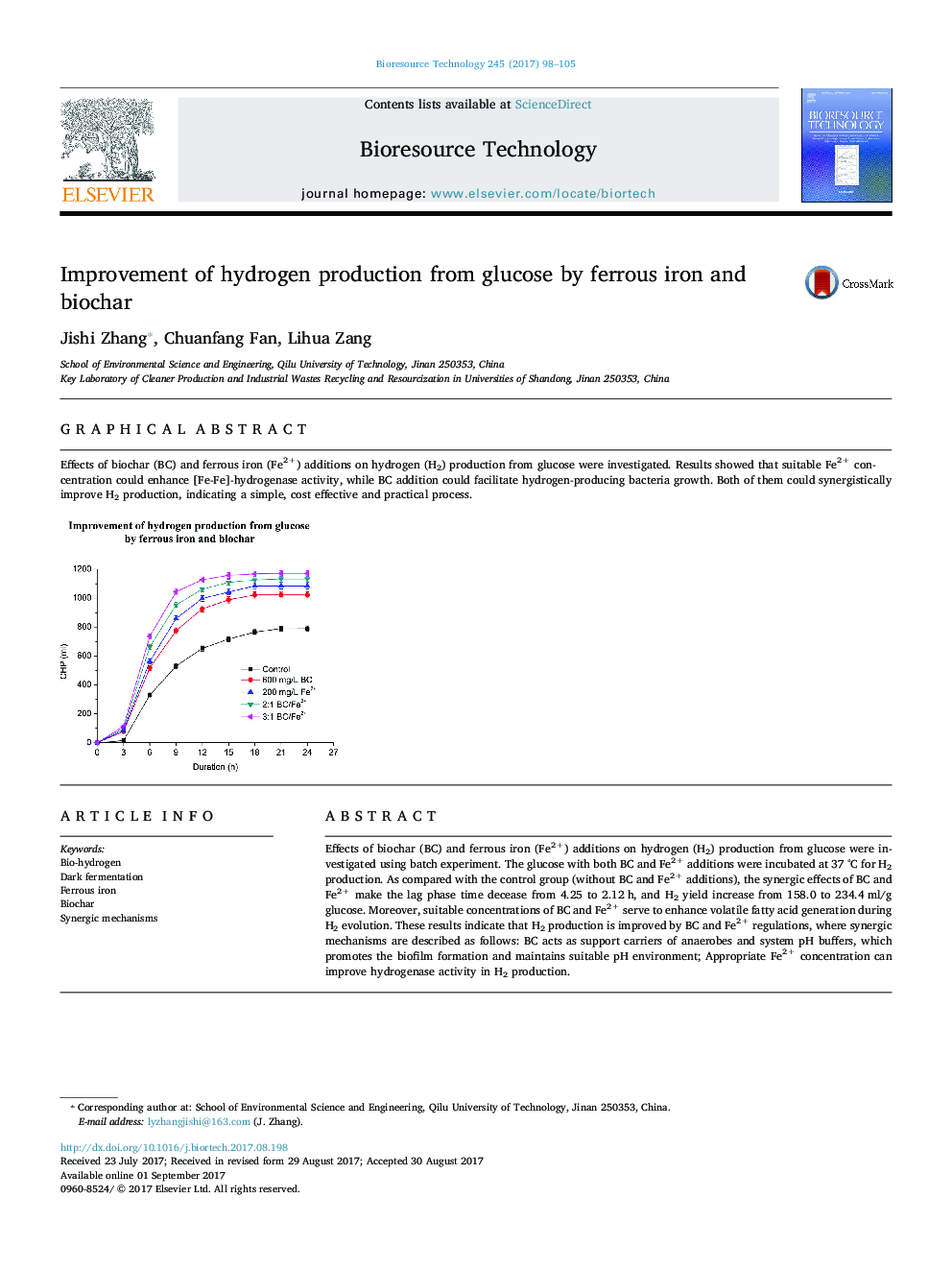| Article ID | Journal | Published Year | Pages | File Type |
|---|---|---|---|---|
| 4996815 | Bioresource Technology | 2017 | 8 Pages |
â¢Suitable ferrous iron (Fe2+) could improve [Fe-Fe]-hydrogenase activity.â¢Biochar (BC) addition could facilitate hydrogen-producing bacteria growth.â¢Maximum H2 yield of 234.4 ml/g glucose was obtained at 3:1 of BC/Fe2+.â¢Fe2+ and BC showed synergistic effects on biohydrogen production.â¢BC value chain was expanded by the use as additive in hydrogen fermentation.
Effects of biochar (BC) and ferrous iron (Fe2+) additions on hydrogen (H2) production from glucose were investigated using batch experiment. The glucose with both BC and Fe2+ additions were incubated at 37 °C for H2 production. As compared with the control group (without BC and Fe2+ additions), the synergic effects of BC and Fe2+ make the lag phase time decease from 4.25 to 2.12 h, and H2 yield increase from 158.0 to 234.4 ml/g glucose. Moreover, suitable concentrations of BC and Fe2+ serve to enhance volatile fatty acid generation during H2 evolution. These results indicate that H2 production is improved by BC and Fe2+ regulations, where synergic mechanisms are described as follows: BC acts as support carriers of anaerobes and system pH buffers, which promotes the biofilm formation and maintains suitable pH environment; Appropriate Fe2+ concentration can improve hydrogenase activity in H2 production.
Graphical abstractEffects of biochar (BC) and ferrous iron (Fe2+) additions on hydrogen (H2) production from glucose were investigated. Results showed that suitable Fe2+ concentration could enhance [Fe-Fe]-hydrogenase activity, while BC addition could facilitate hydrogen-producing bacteria growth. Both of them could synergistically improve H2 production, indicating a simple, cost effective and practical process.Download high-res image (67KB)Download full-size image
